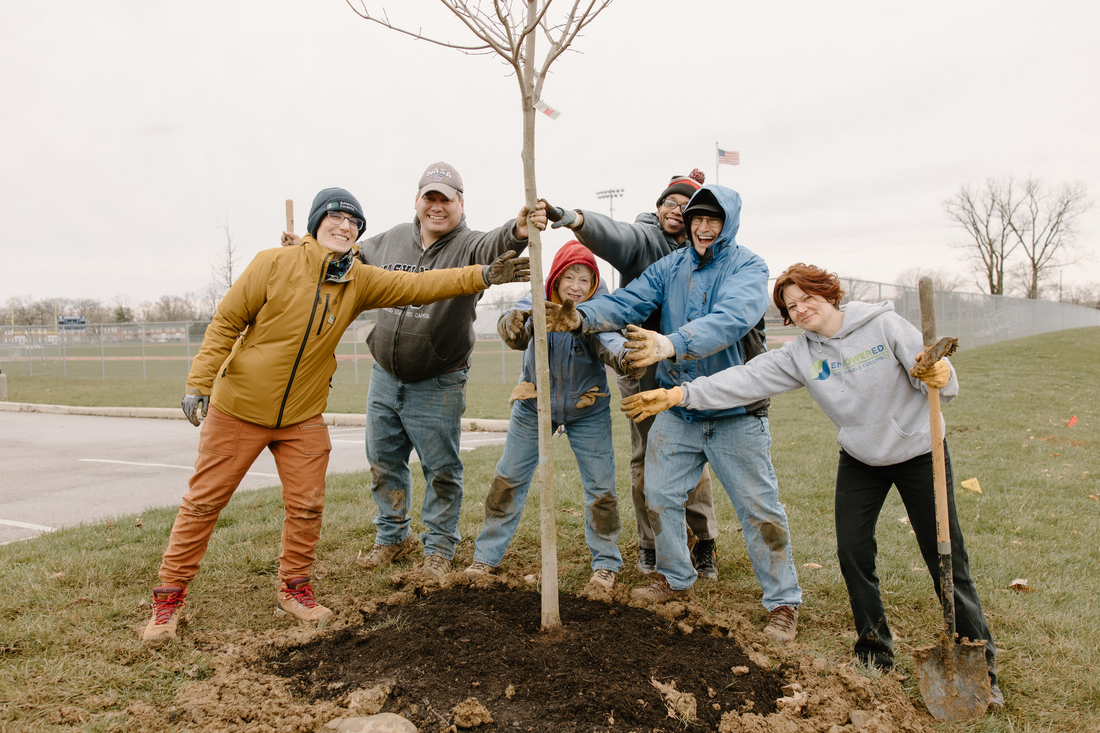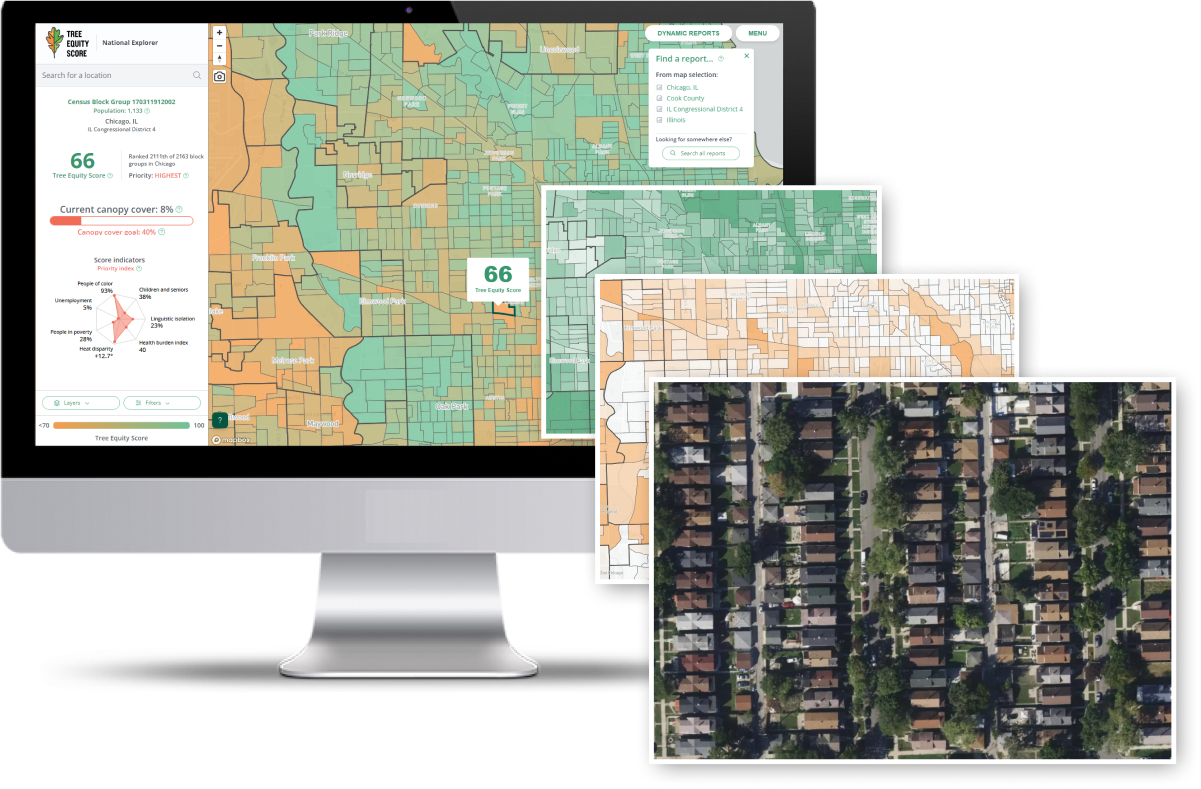
Photo Credit: Mikayla Heinen / Green Columbus
IN THE SPRAWLING URBAN landscapes of America, the importance of trees extends far beyond aesthetics. Trees serve as vital lifelines, offering shade, cleaner air and better mental well-being. However, not all communities have equal access to these essential green spaces. This stark disparity is at the heart of the Tree Equity movement, a cause named by American Forests and now propelled by support from Google.
In 2022, Google.org provided $450,000 in grant funding and invaluable technical expertise to improve American Forests’ groundbreaking Tree Equity Score tool. Through Google’s AI-powered Tree Canopy insights, American Forests’ GIS team gained access to high-resolution tree canopy data, revolutionizing the accuracy and scope of the Tree Equity Score. This collaboration paved the way for the expansion of the tool beyond the United States, culminating in the launch of the Tree Equity Score in the United Kingdom, a critical turning point for the Tree Equity movement that signifies the global nature of the issue.

Photo Credit: Julia Twichell / American Forests
By sharing its tree canopy data with American Forests, Google is advancing a fundamental aim of the Tree Equity Score tool: making data more accessible to inspire community involvement and drive progress. In cities like Houston, Texas, and Columbus, Ohio, Google’s support has enabled the creation of Tree Equity Score Analyzers — city-specific, deep-dive versions of the Tree Equity Score tool — that empower local stakeholders to identify and prioritize tree-planting projects for maximum socioeconomic impact.
In March 2024, representatives from American Forests and Google joined community leaders in Columbus, Ohio to celebrate the launch of the Columbus and Franklin County, OH Tree Equity Score Analyzer, The analyzer was created through consultation with representatives from more than 25 local organizations, including individuals from regional planning councils, county parks departments, conservation districts and community garden groups. The stakeholder council then used the tool to identify an area with a low Tree Equity Score in which to host an inaugural planting event.
Led by local partner Green Columbus, volunteers planted trees at Africentric Early College High School, signifying the beginning of a collaborative investment in Tree Equity in the region.
This local endeavor serves as a microcosm of the broader movement towards Tree Equity, which is fueled by strategic collaborations and support from companies like Google who share American Forests’ vision of Tree Equity.
“The AI work we do at Google is most impactful when partners like American Forests are out there working with communities, making sure our tree canopy data is put to work for urban canopy planning,” says Dan Morris, senior research scientist with Google AI for Nature and Society.
Beyond planting trees, these collaborations empower stakeholders in cities nationwide to prioritize Tree Equity in their planning and policymaking. With a bold goal to bring Tree Equity to cities and towns across the U.S. and the globe, American Forests is leading the charge toward a future where every community, regardless of race or income, enjoys the benefits of a thriving urban tree canopy.